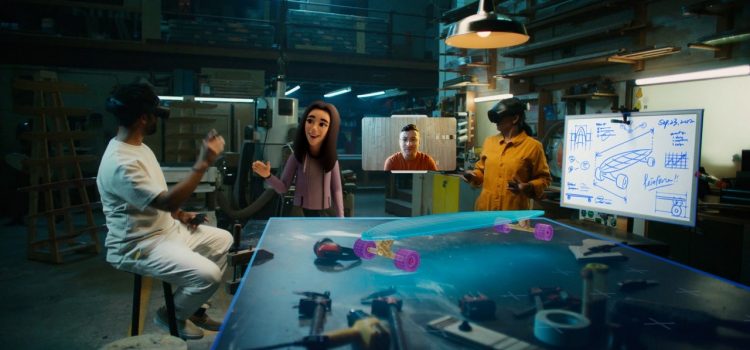


Another part of the keynote was a scripted conversation between Meta’s vice president of metaverse, Vishal Shah, and his boss, chief technology officer Andrew Bosworth. After touting the variety of virtual environments people have created in Horizon Worlds, Shah rhapsodized about how great it will be when people can wander in via the web. The experience, he says, “takes their ability to connect people to another level.” But since your web browser and phone don’t provide an immersive VR display, it’s the same level—only you’re experiencing it in steerage, while Quest-equipped users travel in first class. Boz hinted at why Meta would want to invite people to that second-class experience: ”We can’t give everyone an immersive experience,” he said, “But it’ll be a while before there are enough headsets out there.”
Whether or not that’s the right approach, it’s one that some VR startups have come around to. As hard as it is to give up a fully immersive VR experience, the audiences aren’t there yet. One company, Mesmerise, has invested deeply in avoiding the compromises of a hybrid experience. “The perfect scenario is everyone in VR,” says CEO Andrew Hawken. “Everyone giving their undivided attention—you’re all in it together.” But even Hawken admits that too many people think that donning headsets isn’t worth it, and Mesmerise is working on a 2-D interface. “The experience is compromised, but we don’t want to exclude people,” he says.
Another VR startup, Spatial, made that decision a while ago. “We thought the computer of the future would be a pair of glasses,” says CEO Anand Agarawala. His company first built for Microsoft’s HoloLens, and then for Quest headsets, but Spatial never saw its worlds populated with crowds of users. “People were reluctant to put on a headset,” Agarawala says. Even when people owned the hardware, when it was time for a meeting, some wouldn’t have it handy, and others were frustrated by setting it up. It was so much easier to just do a meeting in Zoom or Teams. So Agarawala created a non-VR means to access his virtual worlds and workspaces. It’s not immersive, but people can log on in five seconds. Now, he says, 80 percent of his customers use the web or mobile. Those people don’t feel bad that they’re not getting an immersive experience—because they’re in the majority.
Could it be that the metaverse doesn’t require VR after all? For now, even with headsets, the current technology leaves some people cold—apparently including people paid to work on VR at Meta itself. Recent internal memos written by Shah and leaked to the Verge admit that Horizon Worlds is plagued with “quality gaps and performance issues.” And Meta is having difficulty getting its own engineers to meet in VR, despite orders from above that they must do so. “The simple truth is, if we don’t love it, how can we expect our users to love it?,” Shah wrote. Maybe they’ll love the web version more.
